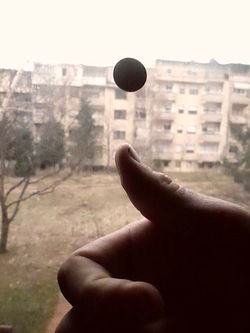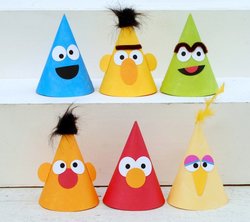Probability - Problem Solving
To solve problems on this page, you should be familiar with
Problem Solving - Basic
If I throw 2 standard 5-sided dice, what is the probability that the sum of their top faces equals to 10? Assume both throws are independent to each other.
Solution: The only way to obtain a sum of 10 from two 5-sided dice is that both die shows 5 face up. Therefore, the probability is simply \( \frac15 \times \frac15 = \frac1{25} = .04\)
If from each of the three boxes containing \(3\) white and \(1\) black, \(2\) white and \(2\) black, \(1\) white and \(3\) black balls, one ball is drawn at random. Then the probability that \(2\) white and \(1\) black balls will be drawn is?
2 fair 6-sided dice are rolled. What is the probability that the sum of these dice is \(10\)?
Solution: The event for which I obtain a sum of 10 is \(\{(4,6),(6,4),(5,5) \}\). And there is a total of \(6^2 = 36\) possible outcomes. Thus the probability is simply \( \frac3{36} = \frac1{12} \approx 0.0833\)
If a fair 6-sided dice is rolled 3 times, what is the probability that we will get at least 1 even number and at least 1 odd number?
 Three fair cubical dice are thrown. If the probability that the product of the scores on the three dice is \(90\) is \(\dfrac{a}{b}\), where \(a,b\) are positive coprime integers, then find the value of \((b-a)\).
Three fair cubical dice are thrown. If the probability that the product of the scores on the three dice is \(90\) is \(\dfrac{a}{b}\), where \(a,b\) are positive coprime integers, then find the value of \((b-a)\).
You can try my other Probability problems by clicking here
Suppose a jar contains 15 red marbles, 20 blue marbles, 5 green marbles, and 16 yellow marbles. If you randomly select one marble from the jar, what is the probability that you will have a red or green marble?
First, we can solve this by thinking in terms of outcomes.
You could draw a red, blue, green, or yellow marble. The probability that you will draw a green or a red marble is \(\frac{5 + 15}{5+15+16+20}\).
We can also solve this problem by thinking in terms of probability by complement.
We know that the marble we draw must be blue, red, green, or yellow. In other words, there is a probability of 1 that we will draw a blue, red, green, or yellow marble. We want to know the probability that we will draw a green or red marble. The probability that the marble is blue or yellow is \(\frac{16 + 20}{5+15+16+20}\). , Using the following formula \(P(\text{red or green}) = 1 - P(\text{blue or yellow})\), we can determine that \(P(\text{red or green}) = 1 - \frac{16 + 20}{5+15+16+20} = \frac{5 + 15}{5+15+16+20}\).
 Two players, Nihar and I, are playing a game in which we alternate tossing a fair coin and the first player to get a head wins. Given that I toss first, the probability that Nihar wins the game is \(\dfrac{\alpha}{\beta}\), where \(\alpha\) and \(\beta\) are coprime positive integers.
Two players, Nihar and I, are playing a game in which we alternate tossing a fair coin and the first player to get a head wins. Given that I toss first, the probability that Nihar wins the game is \(\dfrac{\alpha}{\beta}\), where \(\alpha\) and \(\beta\) are coprime positive integers.
Find \(\alpha + \beta\).
Problem Solving - Intermediate
If I throw 3 fair 5-sided dice, what is the probability that the sum of their top faces equals 10?
Solution: We want to find the total integer solution for which \(a +b+c=10 \) with integers \(1\leq a,b,c \leq5 \). Without loss of generality, let \(a\leq b \leq c\).
We list out the integer solutions:
\[ (1,4,5),(2,3,5), (2,4,4), (3,3,4) \]
When relaxing the constraint of \(a\leq b \leq c\), we have a total of \(3! + 3! + \frac{3!}{2!} + \frac{3!}{2!} = 18 \) solutions.
Because there's a total of \(5^3 = 125\) possible combinations, the probability is \( \frac{18}{125} = 14.4\%. \ \square\)
 Suppose you and 5 of your friends each brought a hat to a party. The hats are then put into a large box for a random-hat-draw. What is the probability that nobody selects his or her own hat?
Suppose you and 5 of your friends each brought a hat to a party. The hats are then put into a large box for a random-hat-draw. What is the probability that nobody selects his or her own hat?
How many ways are there to choose exactly two pets from a store with 8 dogs and 12 cats?
Since we haven't specified what kind of pets we pick, we can choose any animal for our first pick, which gives us \( 8+12=20\) options. For our second choice, we have 19 animals left to choose from.
Thus, by the rule of product, there are \( 20 \times 19 = 380 \) possible ways to choose exactly two pets.
However, we have counted every pet combination twice. For example, (A,B) and (B,A) are counted as two different choices even when we have selected the same two pets. Therefore, the correct number of possible ways are \( {380 \over 2} = 190 \)
A bag contains blue and green marbles. If 5 green marbles are removed from the bag, the probability of drawing a green marble from the remaining marbles would be 75/83 . If instead 7 blue marbles are added to the bag, the probability of drawing a blue marble would be 3/19 . What was the number of blue marbles in the bag before any changes were made?
Bob wants to keep a good-streak on Brilliant, so he logs in each day to Brilliant in the month of June. But he doesn't have much time, so he selects the first problem he sees, answers it randomly and logs out, despite whether it is correct or incorrect.
Assume that Bob answers all problems with \(\frac{7}{13}\) probability of being correct. He gets only 10 problems correct, surprisingly in a row, out of the 30 he solves. If the probability that happens is \(\frac{p}{q}\), where \(p\) and \(q\) are coprime positive integers, find the last \(3\) digits of \(p+q\).
Out of 10001 tickets numbered consecutively, 3 are drawn at random .
Find the chance that the numbers on them are in Arithmetic Progression .
The answer is of the form \( \frac{l}{k} \) .
Find \( k - l \) where \(k\) and \(l\) are co-prime integers.
HINT : You might consider solving for \(2n + 1\) tickets .
You can try more of my Questions here .
Problem Solving - Difficult

A bag contains a blue ball, some red balls, and some green balls.
You reach into the bag and pull out three balls at random.
The probability you pull out one of each color is exactly 3%.
How many balls were initially in the bag?
More probability questions
Photo credit: www.figurerealm.com

Amanda decides to practice shooting hoops from the free throw line. She decides to take 100 shots before dinner.
Her first shot has a 50% chance of going in.
But for Amanda, every time she makes a shot, it builds her confidence, so the probability of making the next shot goes up, But every time she misses, she gets discouraged so the probability of her making her next shot goes down.
In fact, after \(n\) shots, the probability of her making her next shot is given by \(P = \dfrac{b+1}{n+2}\), where \(b\) is the number of shots she has made so far (as opposed to ones she has missed).
So, after she has completed 100 shots, if the probability she has made exactly 83 of them is \(\dfrac ab\), where \(a\) and \(b\) are coprime positive integers, what is \(a+b\)?
More probability questions
Photo credit: http://polymathprogrammer.com/